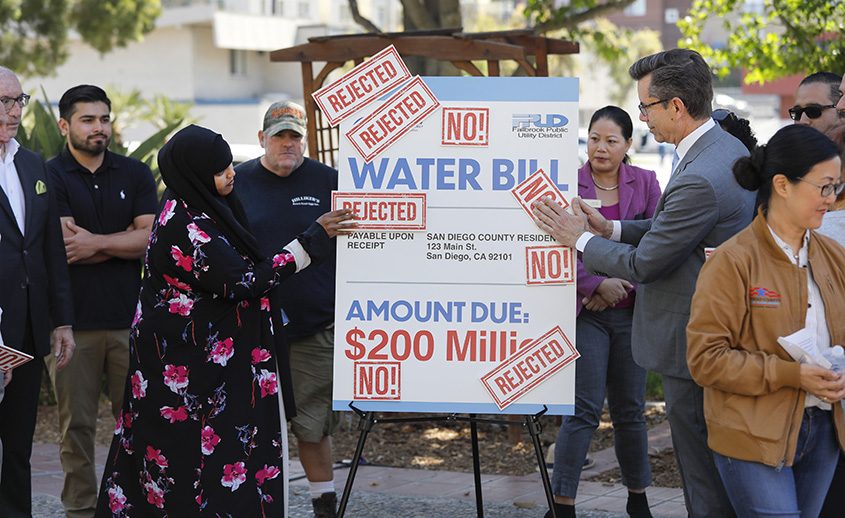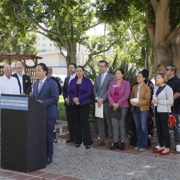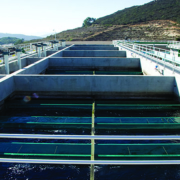Regional Leaders Seek to Protect Ratepayers from $200M Water Bill
San Diego Mayor Todd Gloria joined with regional agriculture, business, water, and elected leaders on Friday to oppose a potential $200 million water bill increase for ratepayers across San Diego County.
“The proposed action will have significant, long-term economic impacts to most households in San Diego County. Nearly every family and business will see an increase in their water rates,” Mayor Gloria said. “The cost of living is a continuous struggle for many San Diegans and these proposed rate increases are unacceptable.”
Chair Nora Vargas of the San Diego County Board of Supervisors commented on the proposal’s impact on low-income residents and the lack of a countywide vote. “An unnecessary increase in water bills means taking money away each month from hardworking families who can least afford it,” she said. “Not only will this detachment proposal lead to higher water bills, we also won’t have a say in the matter.”
Jerry Sanders, President and CEO of the San Diego Regional Chamber of Commerce, said it’s counterproductive to saddle businesses with additional bills. “This proposal would shift millions in added costs onto local businesses, many of which operate on thin margins,” Sanders said. “Our businesses face so many threats to success. Let’s not add to these challenges with an unnecessary water rate hike.”

A new study indicates original LAFCO cost estimates of detachment are as much as 50% below the true price tag, as much as $200 million. Photo: San Diego County Water Authority
Cost Analysis of Detachment Called Flawed
Two water agencies in Fallbrook and Rainbow seek to leave the San Diego County Water Authority without paying the full cost of investments made on their behalf over the past several decades. On July 10, the San Diego Local Agency Formation Commission’s (LAFCO) board is expected to vote on the “detachment” proposal, possibly with the inclusion of a limited “exit fee” for Fallbrook and Rainbow. However, LAFCO’s figures are based on years-old data and flawed projections that understate the annual costs of detachment by at least 50%.
Updated figures released this week show that disadvantaged communities, working families, farmers, and others across San Diego County will be forced to pay nearly $200 million more over the next decade for water service unless the agencies seeking to leave the Water Authority are required to fully cover their costs. LAFCO’s data don’t reflect the inflationary realities or the fact that the financial impacts of detachment will continue far beyond LAFCO’s five-year horizon.
“I am deeply concerned that LAFCO could make this momentous decision without ensuring the accuracy of the costs of detaching from the Water Authority or allowing residents countywide to vote on this scheme,” said Water Authority Board Chair Mel Katz.
LAFCO’s staff recommendation to approve the detachment plan does not include a substantive analysis of impacts to disadvantaged communities or to agriculture in the Water Authority service area. Nor does it include the environmental analysis required by law.
Agriculture Deeply Affected By Proposal
“We all care about the cost of water because it’s a major factor for most farms,” said Frank Hilliker,” Board Chair of the Lakeside Water District and a long-time egg farmer in East County. “If Fallbrook and Rainbow water agencies don’t pay their costs, it hurts farmers like me who will be forced to pay more. I urge LAFCO to make sure that they require full cost coverage by Fallbrook and Rainbow to protect our region’s agriculture industry.”
A coalition of government, community, business, labor, agriculture, and water leaders joined together today to collectively urge San Diego LAFCO to vote no on detachment at its meeting on Monday, July 10. These leaders include:
- Mayor Todd Gloria, City of San Diego
- Chair Nora Vargas, San Diego County Board of Supervisors
- Councilmember Stephen Whitburn, City of San Diego
- Vice Mayor Colin Parent, City of La Mesa
- District Director Janet Chin, Office of Assemblymember Tasha Boerner, District 77
- Chair Mel Katz, San Diego County Water Authority
- Vice Chair Nick Serrano, San Diego County Water Authority
- Board Chair Frank Hilliker, Lakeside Water District & East County Farmer
- President & CEO Jerry Sanders, San Diego Regional Chamber of Commerce
- Vice President Carol Kim, San Diego & Imperial Counties Labor Council
- Vice Chair Gail Goldberg, Metropolitan Water District of Southern California




